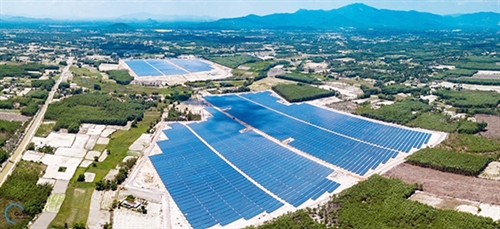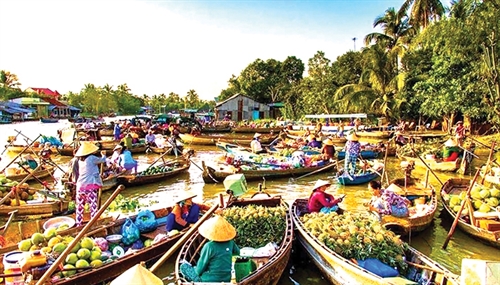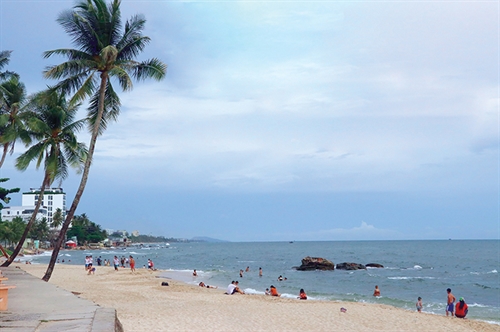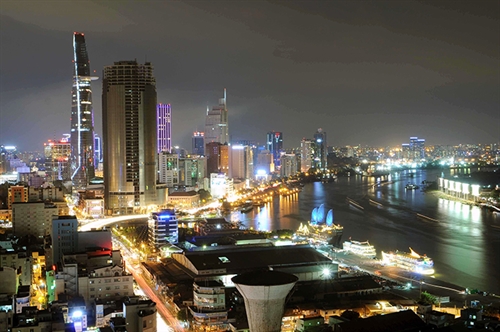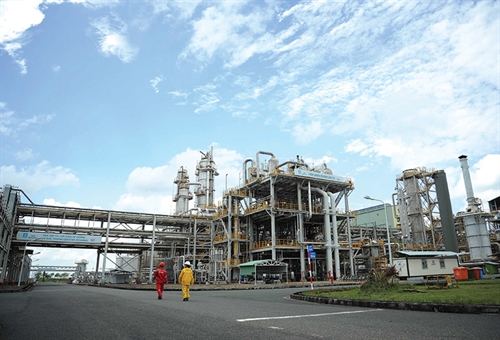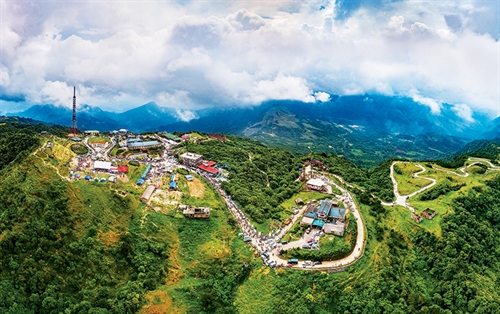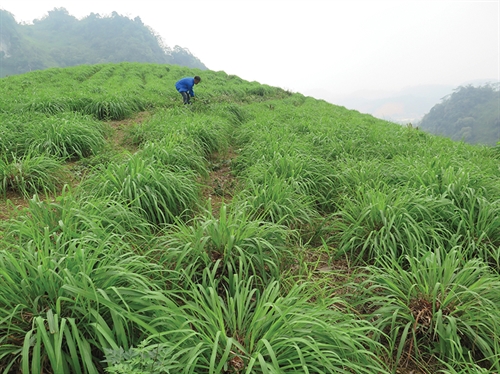Located in Vietnam’s northwestern region, Son La province borders Yen Bai and Lai Chau provinces to the north, Hoa Binh and Phu Tho provinces to the east, Dien Bien province to the west, and Thanh Hoa province and Laos’ Houaphanh province to the south with a borderline of 250 kilometers. Covering some 14,123 square kilometers, Son La is the third largest locality in the country by area with a population of almost 1.25 million (according to 2019 statistics). It is home to Thai ethnic group as the most populous group that accounts for more than half of its population, followed by Kinh (Viet) and other indigenous ethnic groups, including H’Mong, Muong, Dao, Kho Mu, Xinh Mun, Khang, La Ha, Lao, Tay and Hoa. It has a provincial city with the same name and 11 districts of Quynh Nhai, Muong La, Thuan Chau, Phu Yen, Bac Yen, Mai Son, Song Ma, Yen Chau, Moc Chau, Sop Cop and Van Ho.
Potential to attract FDI
With 253 kilometers of Da river and 93 kilometers of Ma river running through it, the province boasts large potential for aquaculture and hydropower development. In addition to four exiting hydropower plants - the 2,400MW Son La, 520 MW Huoi Quang, 200MW Nam Chien 1 and 32 MW Nam Chien 2, the provincial authorities have licensed the construction of dozens of small- and medium-sized hydropower plants.
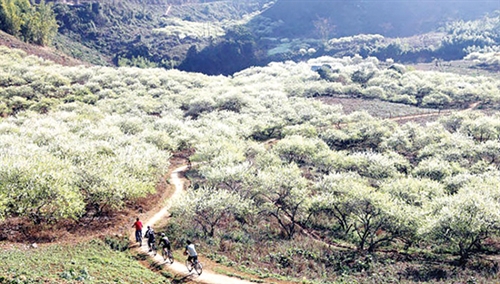 |
| Plum blossom season in Moc Chau district, Son La province__Photo: Internet |
Son La is also home to more than 50 mines and mineral pits with large deposits of nickel and copper in Bac Yen district, talc and coal in Moc Chau district, and magnetite in Song Ma district. With such construction materials as limestone, kaolin and clay, the province has great potential to develop mining industry.
Apart from the Na San airport in its capital town, Son La and other northwestern localities are connected with Hanoi capital by National Highway No. 6. In order to ease congestion on this key route and promote socio-economic development of Son La and Hoa Binh provinces, the Prime Minister has given green light to a public-private partnership (PPP) investment project for the construction of the Hoa Binh-Moc Chau expressway.
Son La is well-known for its Moc Chau and Na San plateaus with tea plantation, dairy cow farms and hi-tech flower farms. The province has 78,850 hectares of fruit trees with specialty fruits such as Son La plum and passion fruit, Song Ma longan, Yen Chau mango and banana, Moc Chau avocado, and Mai Son red-dragon fruit. Its 21 farm products have obtained trademark registration certificates of the Intellectual Property Office of Vietnam. Among them, Shan Tuyet Moc Chau tea has been successfully registered in Thailand and granted a protection title. Sixteen farm products have been exported to 14 countries and territories, including Australia, France, Japan, Russia and the US.
Deputy Prime Minister Pham Binh Minh has demanded Son La provincial authorities to seek ways to develop agricultural production, renewable energy and tourism in order to diversify their local budget revenues and reduce the province’s dependence on hydropower.
At present, the province hosts Mai Son industrial park and four industrial complexes.
According to the Son La Planning and Investment Department’s external economic affairs division, the province has so far granted investment licenses to 10 foreign direct investment (FDI) projects with a combined registered capital of USD 147.9 million. Its FDI came from New Zealand, Japan, the Republic of Korea (RoK) and Taiwan (China). Japan has three projects capitalized at 7.4 million USD focusing on tea and vegetable growing and processing.
As Son La is located in a geographical area meeting with extremely difficult socio-economic conditions, its investment projects will enjoy investment incentives specified in Articles 15 and 16 of the 2014 Investment Law. In particular, entities investing in the province will enjoy a corporate income tax rate of 10 percent for 15 years after being entitled to tax exemption for four years and 50-percent tax reduction for subsequent nine years.
In addition, provincial authorities have slashed time for completing procedures for enterprise establishment to two days, and administrative procedures concerning domestic and foreign investment projects by one-third, and for appraisal of requests for investment policy decisions to 23 days. Investors in the province will be entitled to investment registration certificates for projects subject to approval of investment policy decision within three days, for projects not subject to approval of investment policy decision within 10 days, or to construction permits within 15 working days from the date of application.
The province is currently making preparations for the Son La investment promotion conference in 2021 and drawing up a list of projects calling for investment in the 2021-25 period.
In the coming time, the provincial authorities will continue holding “coffee talks” and dialogues with entrepreneurs and investors to gather their recommendations concerning construction, planning, land and environment-related procedures and address their problems.
Women’s role in tourism development
Son La province boasts dozens of amazing spots that tourists should not miss. Located in Moc Chau district, Son Moc Huong cave, also known as Bat cave, is said to be the most beautiful cave in the province with spectacular stalagmites and stalactites of different shapes and sizes and various traces of pre-history human existence. The province is famous for Dai Yem waterfall, in Moc Chau district with landscapes closely related to the Thai’s legend as well as many hot springs, namely Mong spring in Son La provincial town and Ngoc Chien in Muong La district. It is home to many historical and cultural sites such as Son La prison built by French colonialists in 1908 on Khau Ca hill to jail Vietnamese patriots and the Moc Ly army station built by French colonialists.
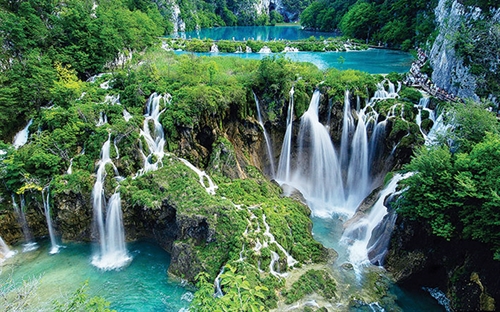 |
| Dai Yem waterfall in Son La province__Photo: Internet |
Son La boasts various festivals of 12 indigenous ethnic groups such as Le cap sac (maturity ritual) - an original religious trait of the Dao, new rice worshipping ceremony of the Lao, praying-for-rain ceremony of the Thai and Pang A - a praying for luck rite of the La Ha. It is home to traditional craft villages that make pieu (embroidered scarves), panpipes, brocade weaving products and rattan and bamboo products.
To increase the participation of women, especially ethnic women, in the province’s community-based tourism and agriculture development, the Gender Responsive Equitable Agriculture and Tourism (GREAT) program funded by the Australian Government is being carried out in Son La and Lao Cai provinces. GREAT works with the private sector, government agencies and non-governmental organizations to create opportunities for women within agriculture and tourism sectors.
With the budget of AUD 16,850,000 for Son La province alone, the program that was started in December 2017 in Moc Chau and Van Ho districts will be carried out across the province until the end of this year.
Thanks to the program, nearly 4,280 women, including 3,644 ethnic women, have joined cooperatives or businesses specialized in production and processing of agricultural products and community-based tourism services. The program has provided knowledge and skills in agriculture, processing, tourism and business for 22,403 women, including 13,943 ethnic women and the program and developed 30 homestays.
Apart from these homestays, Son La has eight three to five star hotels, 43 hotels and 269 guest houses.
According to the Son La Department of Culture, Sports and Tourism, the hospitality sector welcomed 1.7 million tourists in 2020, representing 67 percent of this year’s plan due to the impact of the COVID-19 pandemic. Compared with 2019, the number of tourists to the province reached 2.5 million, including 110,000 foreign holiday makers and its tourism turnover hit almost VND 2 trillion.
In order to turn tourism into an important economic sector in 2025 and a spearhead economic sector in 2030, the hospital sector shall make and distribute 10 videos and documentary films on provincial tourism potential, farm products and specialties, and ethnic groups’ cultural identities. The sector will continue implementing programs to promote tourism linkage between Ho Chi Minh City and eight northwestern provinces of Phu Tho, Dien Bien, Ha Giang, Hoa Binh, Lai Chau, Lao Cai, Son La and Yen Bai and between Son La and Hanoi.
The sector plans to send three delegations to study international tourism development models and organize ten contests to honor outstanding tourist guides, best cooks and tourism managers and products. A Son La tourism logo design contest will be held to select the Son La tourism logo for domestic and international trademark registration.
It will also develop 30 tourism products and cooperate with domestic travel associations and agents to formulate programs to attract tourists from Japan, the RoK, Laos and European countries with special tours for them.
The hospitality sector is expected to welcome 5.2 million tourists, including 500,000 foreigners, and rake in a turnover of around VND 5.8 trillion by 2025.- (VLLF)
